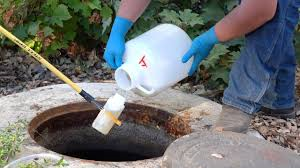 Scientists have not stopped at taking nasal swabs to detect Corona virus. As the pandemic evolves, research continues on the transmission of the Coronavirus from positive Covid-19 cases. It is interesting to see that the Coronavirus positive individuals are not transmitting the virus only while sneezing, coughing, talking, or laughing, as the droplets stay suspended in air or land on hard surfaces.
Scientists have not stopped at taking nasal swabs to detect Corona virus. As the pandemic evolves, research continues on the transmission of the Coronavirus from positive Covid-19 cases. It is interesting to see that the Coronavirus positive individuals are not transmitting the virus only while sneezing, coughing, talking, or laughing, as the droplets stay suspended in air or land on hard surfaces.
In addition to this, all Covid-19 positive cases are also excreting the virus in their feces, giving rise to a positive poop. Once it infects a person, Coronavirus can reside in different cells of the body, primarily in the respiratory tract and in the gastrointestinal tract. The Coronavirus genetic framework comprising of the viral RNA gets excreted in feces and can be detected in stool, days before any symptoms appear.
This unique feature of the Coronavirus has provided scientists with a public health tool that can have a wide range of usage. Presently it is mainly being used on university campuses to detect positive cases long before the students are sick and show symptoms. This is the practice seen across some of the campuses in California where samples from individual buildings are drawn from wastewater that comes out of sewage pipes. This is done by a human manually using a dipper at the end of a rod. This way after the positive cases are traced, they can be isolated immediately and hence prevented from causing cross infections.
The effective early detection and isolation of positive cases has been supported by the Center for Disease Control and Prevention, which has set up a federal database of wastewater samples that will allow the local health departments to transform the data into valuable information. This will help in detecting the pattern of spread in certain neighborhoods and also monitor the positive cases sprouting across campuses, where students reside in large numbers in dorms.
The encouraging results of early detection of positive cases through sewage wastewater has set the grounds for early detection of other infectious communicable diseases too like polio, E. coli, salmonella, norovirus and a deadly drug-resistant fungus, Candida Auris. All these infectious diseases outbreaks can cause a deadly global threat, especially in hospitals and nursing homes. Close monitoring of vulnerable communities will help keep potential threats under control.

I didn’t know that. Thanks for sharing this information.
Yes this is an interesting tool that is being used in many states, to update data of positive cases in various counties.
modafinil where to buy order modafinil 200mg online cheap order provigil 100mg online modafinil canada provigil 200mg pills provigil 200mg tablet order provigil 200mg for sale
Your comment is awaiting moderation.